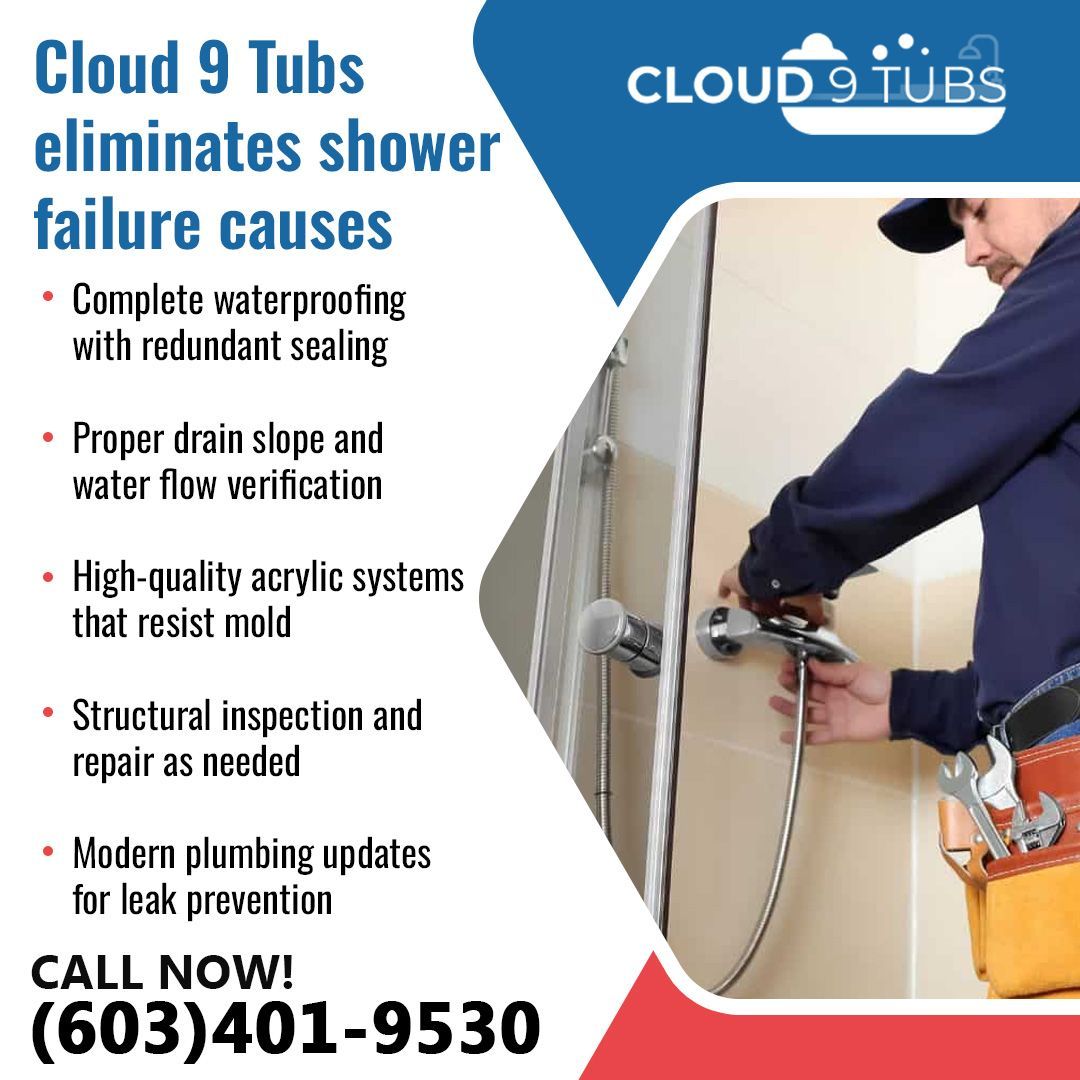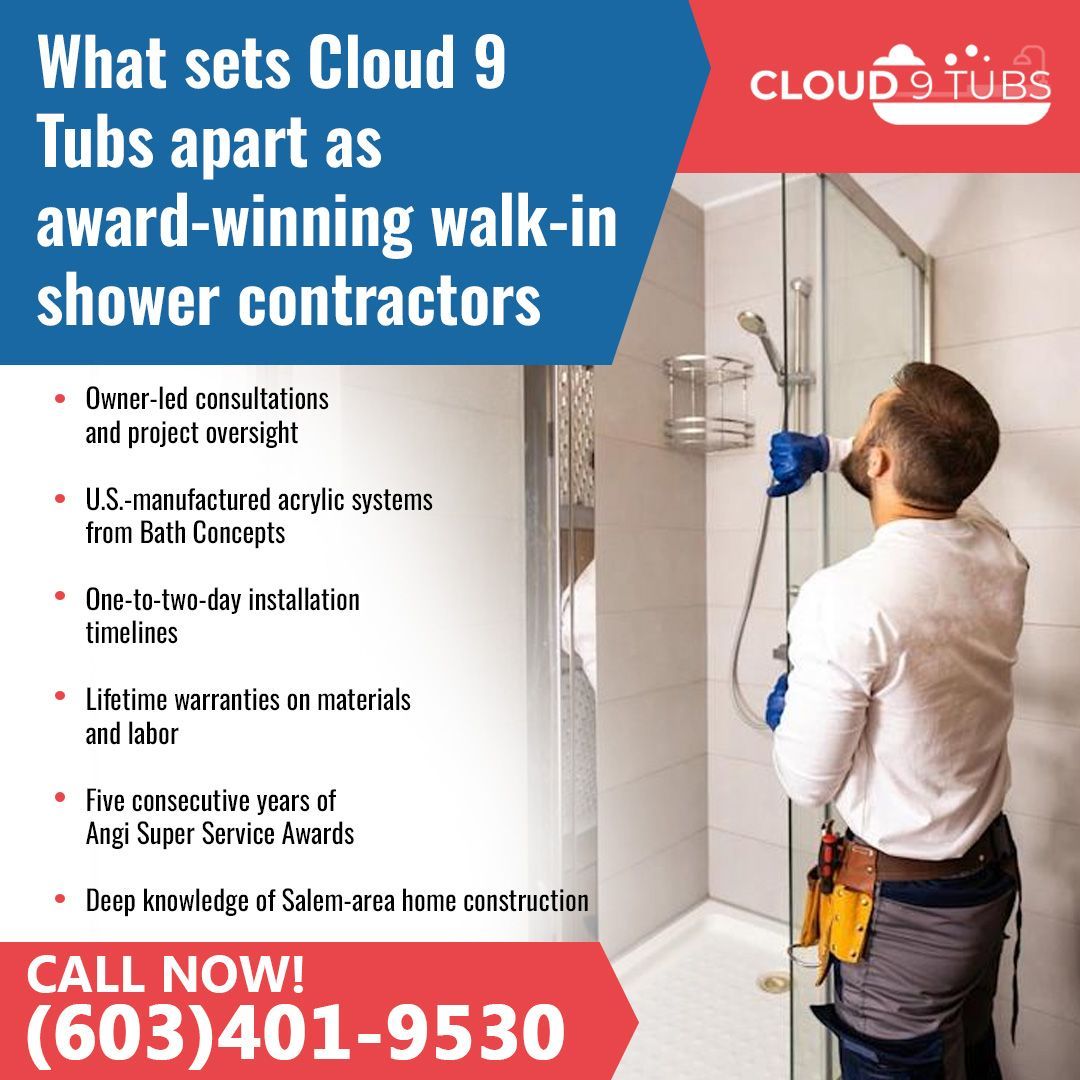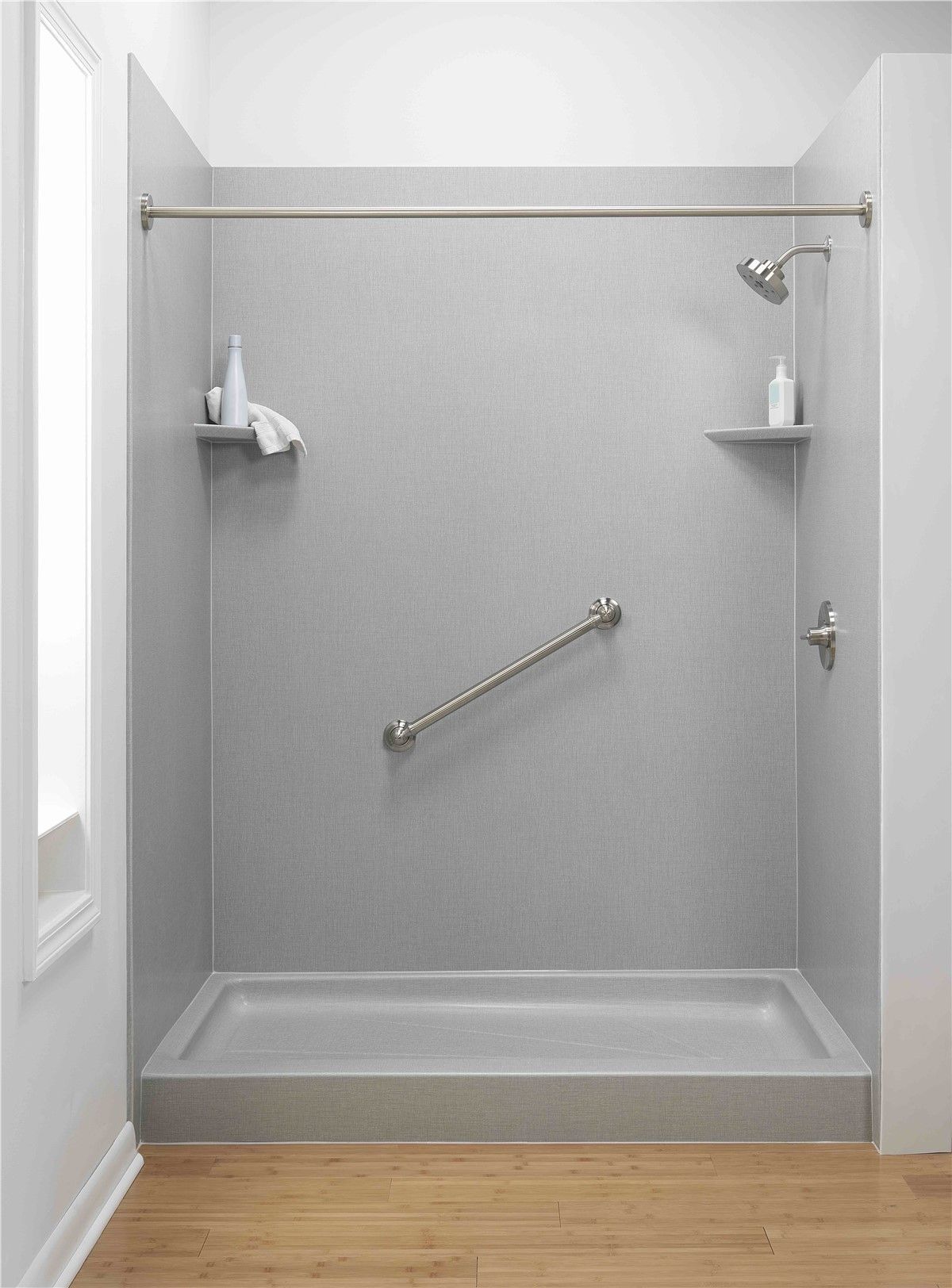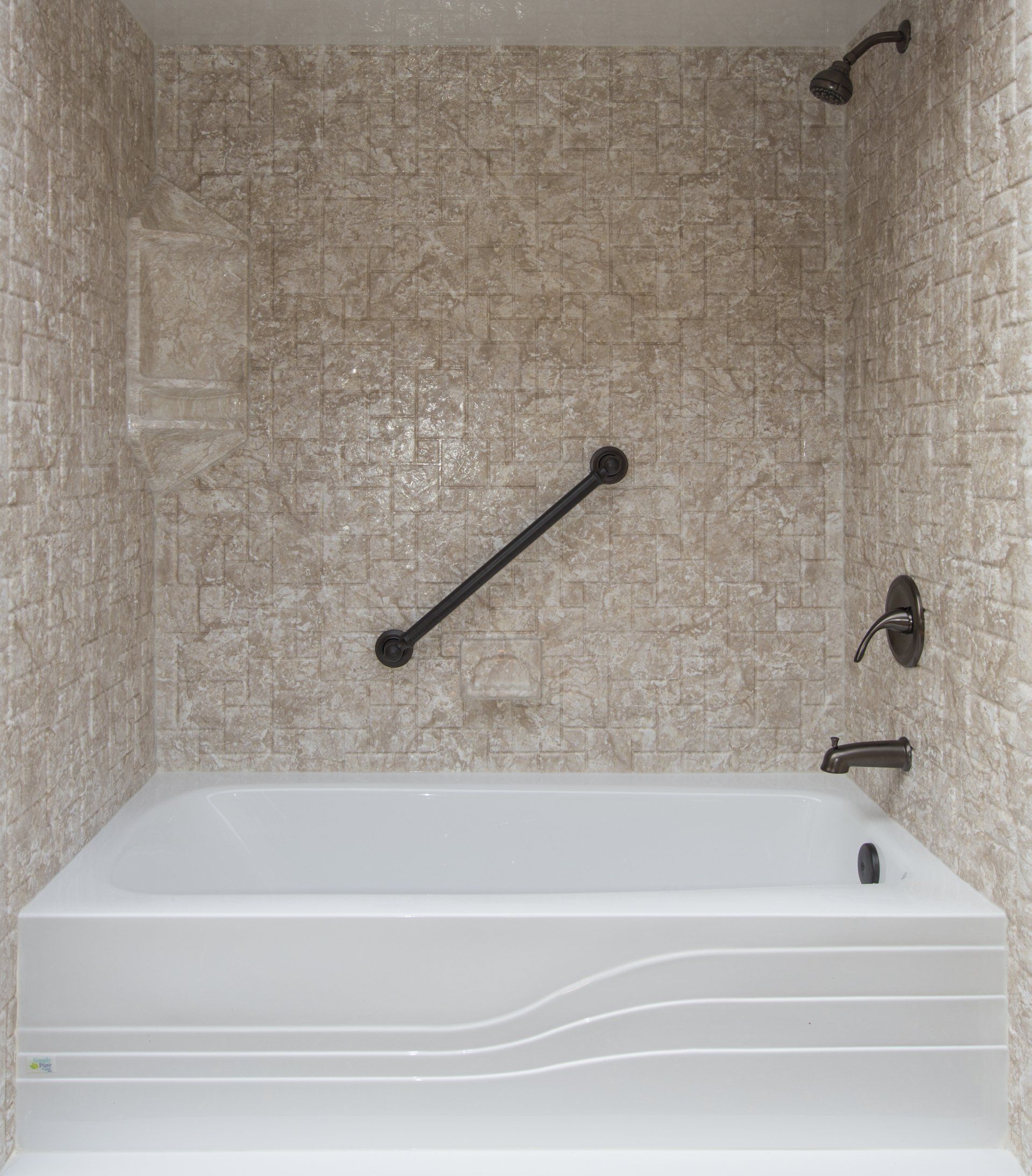Transform Your Bathroom with a Barrier-Free Shower: A Guide to Accessible Bathing
Are you tired of navigating the high sides of traditional bathtubs? Whether due to mobility issues or simply a desire for a sleeker, more modern bathroom, many are turning to barrier-free showers as an optimal solution. These showers, which are also known as zero-entry showers, offer a seamless transition from the bathroom floor into the shower area, eliminating any obstacles that might pose a risk of tripping or falling.
Accessibility Meets Style
One of the most significant advantages of barrier-free showers is their accessibility. These units are designed to make bathing a breeze for everyone, including those with limited mobility or who use wheelchairs. Without the need to step over a tub side or a raised threshold, entering and exiting the shower becomes safer and more comfortable.
But barrier-free showers aren't just about function; they also bring a touch of elegance and modern design to your bathroom. With customizable options that range from tile patterns to doorless designs, these showers can be tailored to fit the aesthetic of any home. Whether you're looking for a minimalist look or something more luxurious, barrier-free showers are versatile enough to meet any design preference.
Safety Without Compromise
Safety is a paramount concern in any bathroom remodel, especially for households with elderly members or those with disabilities. Barrier-free showers address these concerns head-on by reducing the risk of falls. Equipped with features like non-slip floors, built-in seats, and strategically placed grab bars, these showers are designed to provide a secure environment for everyone.
Furthermore, the open design of these showers can make your bathroom appear larger and more inviting, which is a bonus if you're looking to enhance the overall feel of your space. The absence of barriers not only makes the shower more accessible but also contributes to a sense of openness and freedom in the bathroom.
Long-Term Investment
Investing in a barrier-free shower can also be a wise financial decision. Not only does it add value to your home by making it more attractive to a broader range of potential buyers, but it also prepares your household for the future. As we age, our needs change, and having a bathroom that accommodates those changes can save you from costly renovations down the line.
The Essential Features of a Barrier-Free Shower
Embarking on a bathroom renovation with a focus on accessibility doesn’t mean sacrificing style for function. In fact, barrier-free showers can be equipped with a variety of features that enhance both safety and aesthetics. Here’s a closer look at what makes these showers a must-have in modern homes.
Non-Slip Flooring
One of the cornerstone features of any barrier-free shower is non-slip flooring. Safety is paramount in a wet environment, and choosing the right flooring can prevent accidents. Textured tiles or slip-resistant vinyl are popular choices, offering both safety and style. These materials come in a range of colors and patterns, allowing them to seamlessly integrate into your bathroom’s design scheme.
Seamless Entry
The defining characteristic of a barrier-free shower is its level entry. This design eliminates any step or threshold at the shower entrance, making it accessible for wheelchairs and reducing tripping hazards for everyone else. The seamless nature of the entry not only improves accessibility but also contributes to a sleek, modern look that can make your bathroom appear larger and more open.
Grab Bars and Seating Options
For added safety and convenience, incorporating grab bars and seating into your barrier-free shower design is essential. Grab bars should be strategically placed where support is most needed, such as near the entrance and along the walls. Seats, whether built-in or fold-down, provide comfort and security for those who may find standing in the shower challenging.
Adjustable Shower Heads
An adjustable shower head is another vital feature for a barrier-free shower. It allows users of all heights and mobility levels to customize the water flow to suit their needs. Handheld models are particularly useful as they can be easily maneuvered, making it simpler to bathe while seated or to reach different areas without moving much.
Water Containment
Effective water management is critical in a barrier-free shower to prevent water from spilling into other areas of the bathroom. This can be achieved through cleverly designed slopes of the floor leading back towards the drain, as well as by installing water barriers like collapsible dams or weighted shower curtains. These solutions help keep the water contained without disrupting the accessibility of the shower.
These features not only make the shower safer and more accessible but also enhance the overall bathing experience. By combining safety with luxury, barrier-free showers offer a bathing solution that caters to all ages and abilities, ensuring that your bathroom is prepared to meet the needs of your household both now and in the future.
Aesthetic Possibilities of Barrier-Free Showers
Transitioning to a barrier-free shower doesn’t mean you have to compromise on style. In fact, these showers are at the forefront of modern bathroom design, blending functionality with incredible aesthetic appeal. Let’s explore how barrier-free showers can be customized to enhance the beauty and value of your home.
Modern Minimalism
A popular design trend for barrier-free showers is modern minimalism, which emphasizes clean lines, uncluttered spaces, and a monochromatic color palette. Large format tiles with minimal grouting can create a seamless look that visually expands the space. Glass panels can be used to enclose the shower without interrupting the visual flow, maintaining an open, airy feel. This style not only looks sleek and contemporary but also emphasizes the spaciousness of the shower area.
Natural Elements
Incorporating natural elements like stone, wood, and pebble tile can bring a sense of warmth and tranquility to a barrier-free shower. These materials can be used on walls, floors, or as accent features, creating a spa-like environment that feels both luxurious and comforting. The organic textures and colors help soften the modern edges, providing a perfect balance between nature and design.
Bold Accents
For those who love a bit more drama in their decor, barrier-free showers offer a perfect canvas for bold accents. Vibrant mosaic tiles, metallic fixtures, or a striking feature wall can transform your shower into a focal point of the bathroom. These elements not only inject personality into the space but also allow homeowners to express their unique style preferences.
Lighting Design
Effective lighting is crucial in any bathroom, but it plays an especially significant role in barrier-free showers. Recessed LED lights can provide bright, even illumination, which is important for safety. Meanwhile, adding dimmable options or accent lighting can create a more relaxed atmosphere, perfect for unwinding at the end of the day. Strategically placed lights can also highlight the architectural features of the shower and enhance the overall ambiance of the bathroom.
Continuity of Design
Creating a visual continuity between the shower area and the rest of the bathroom is essential for a cohesive look. This can be achieved by extending the same flooring and wall materials into the shower, using similar color schemes, or replicating design motifs. Such continuity not only enhances the aesthetic flow but also makes the bathroom appear larger and more unified.
By considering these aesthetic possibilities, your barrier-free shower can become a centerpiece of design in your home. Not only does it offer practical benefits, but it also contributes significantly to the overall style and atmosphere of your bathroom.
Installing Your Barrier-Free Shower: What You Need to Know
Installing a barrier-free shower involves careful planning and attention to detail to ensure that it is not only stylish but also fully functional and safe. Here’s what you need to consider during the installation process to achieve the best results.
Professional Assessment and Planning
The first step in installing a barrier-free shower is to get a professional assessment of your existing bathroom space. A skilled contractor or bathroom designer can help you understand the possibilities and limitations of your space. They can provide insights into the necessary structural adjustments, plumbing requirements, and waterproofing measures needed for a successful installation.
Choosing the Right Contractor
Selecting the right contractor is crucial. Look for someone with experience in installing barrier-free showers and a good track record of handling bathroom renovations. Check their references and previous work to ensure they have the expertise to handle your project. A knowledgeable contractor will not only ensure a high-quality installation but also help navigate any potential challenges that may arise.
Waterproofing and Drainage
Proper waterproofing is essential in barrier-free showers to prevent leaks and water damage. This includes not only the shower area but also adjacent walls and floors. Your contractor should use high-quality waterproofing materials and techniques to ensure that all surfaces are fully protected.
Effective drainage is another critical aspect. The shower floor must be properly sloped to direct water towards the drain. Ensuring good drainage will help maintain a dry and safe bathroom environment, preventing slips and falls.
Accessibility Features
During installation, it's important to consider the placement and installation of accessibility features such as grab bars, seating, and adjustable shower heads. These should be positioned to provide maximum safety and convenience, based on the specific needs of the users. For instance, grab bars should be installed where they can be easily reached from both seated and standing positions.
Compliance with Local Building Codes
Ensure that your barrier-free shower complies with all relevant local building codes and regulations, particularly those relating to accessibility. This might include specific requirements for the width of the shower entrance, the height of grab bars, and other safety features. Compliance not only ensures safety but also protects you legally and can enhance the resale value of your home.
Final Testing and Adjustment
Once installation is complete, it's important to test the shower thoroughly to ensure that all features are functioning correctly. Check for any leaks, ensure that the drainage is effective, and make sure all accessibility features are securely installed. Any issues should be addressed immediately before the shower is regularly used.
With these considerations in mind, installing a barrier-free shower can significantly enhance the functionality, safety, and aesthetics of your bathroom.
Embracing the Long-Term Benefits of a Barrier-Free Shower
As we wrap up our comprehensive guide to barrier-free showers, it's important to recognize not just the immediate advantages they bring to your bathroom, but also the long-term benefits that can impact your home and quality of life for years to come.
Enhanced Safety and Accessibility
The most immediate benefit of a barrier-free shower is enhanced safety. By removing obstacles like steps and ledges, these showers minimize the risk of falls, making them a safer option for everyone, particularly for those with mobility issues or the elderly. The incorporation of features like non-slip flooring, grab bars, and seating further ensures that the bathroom remains a secure place.
Increased Home Value
A barrier-free shower is a significant upgrade that can increase the value of your home. Today’s homebuyers are increasingly looking for homes that accommodate diverse needs and lifestyles, including aging in place. A bathroom that is stylish, modern, and accessible can be a strong selling point, making your property stand out in the competitive real estate market.
Adaptability and Flexibility
Barrier-free showers are designed to be adaptable to the changing needs of individuals and families. Whether it's accommodating a young family with small children or adjusting to the mobility needs of older adults, these showers are designed to serve effectively across a spectrum of life stages. This adaptability makes them a smart investment for anyone thinking long-term about their living spaces.
Ease of Maintenance
The design features of barrier-free showers, such as seamless floors and wall surfaces, typically require less maintenance compared to traditional showers. The lack of crevices and edges where mold and mildew can accumulate makes cleaning easier and more efficient. This not only saves time and effort in maintenance but also contributes to a healthier living environment.
Aesthetic Appeal and Lifestyle Enhancement
Barrier-free showers are not just functional; they are also aesthetically pleasing. They can transform a regular bathroom into a more luxurious and spa-like space. This enhancement is not only enjoyable in daily life but promotes a lifestyle of relaxation and comfort. The open, airy design can make even smaller bathrooms feel more spacious and inviting.
Choosing to install a barrier-free shower can be a transformative decision for your home and lifestyle. It offers a blend of safety, style, and practicality that is hard to match with traditional bathing options. As our homes continue to evolve with our needs, having a bathroom that prioritizes accessibility without sacrificing style or comfort is an investment that pays dividends in safety, comfort, and resale value.
Blog






